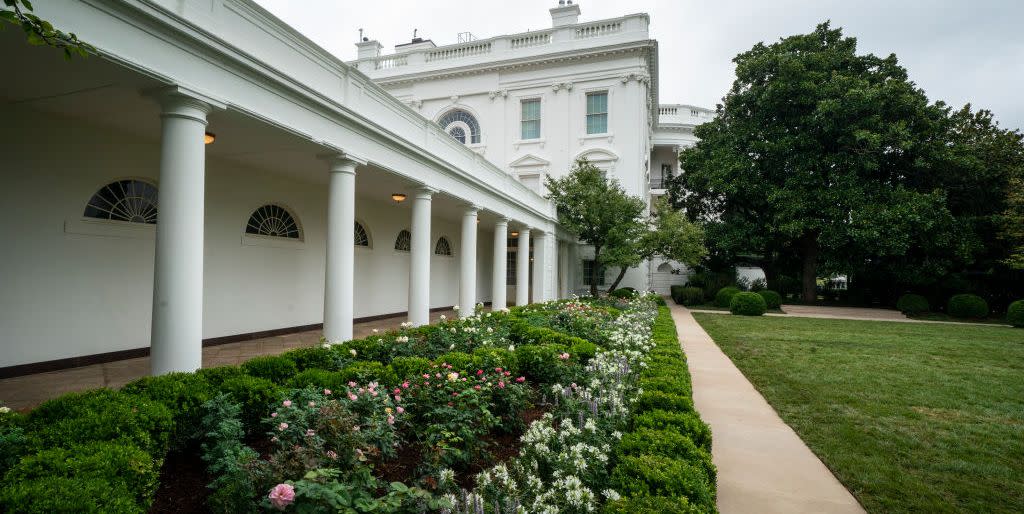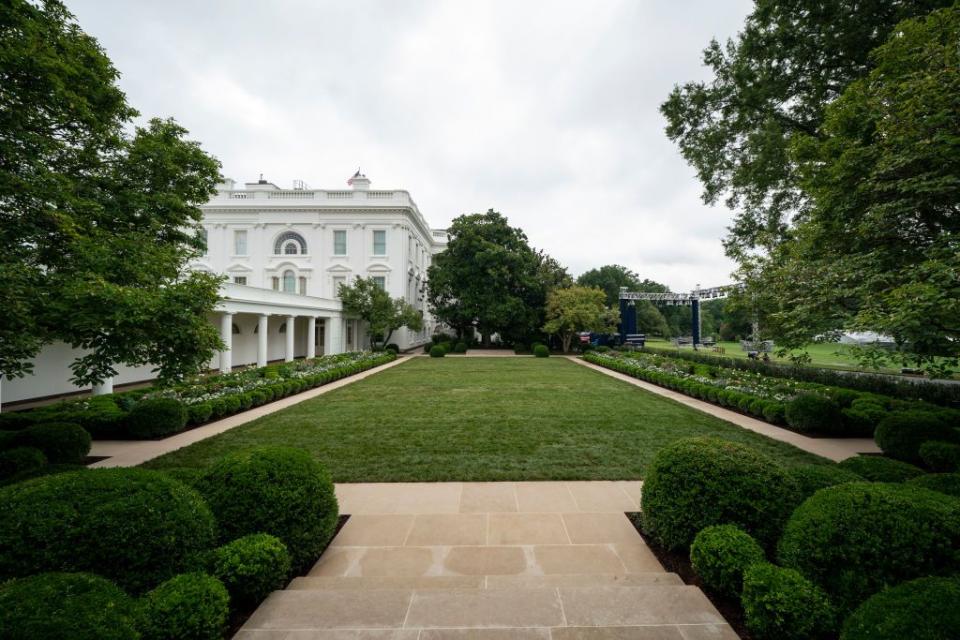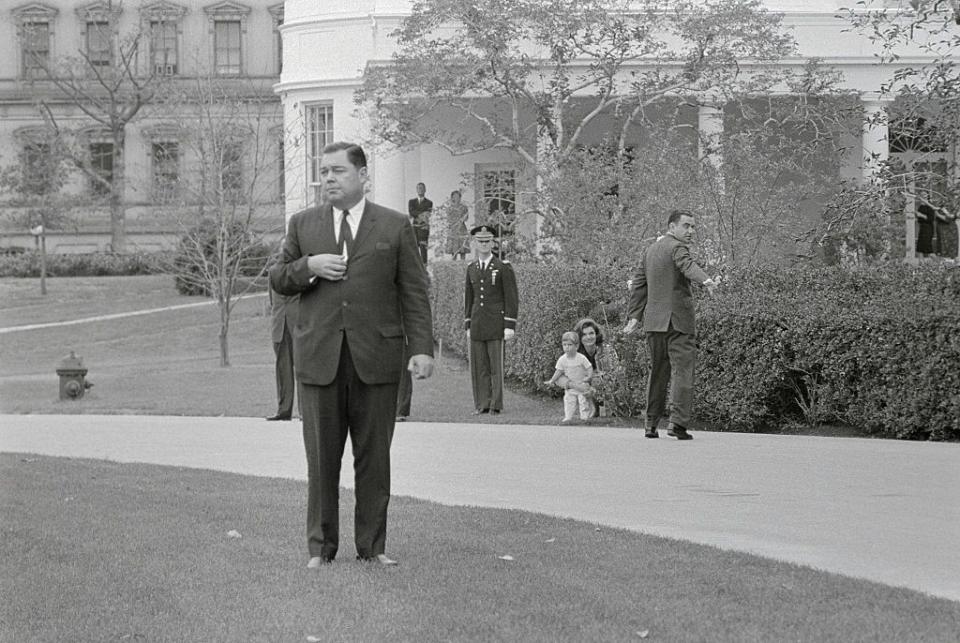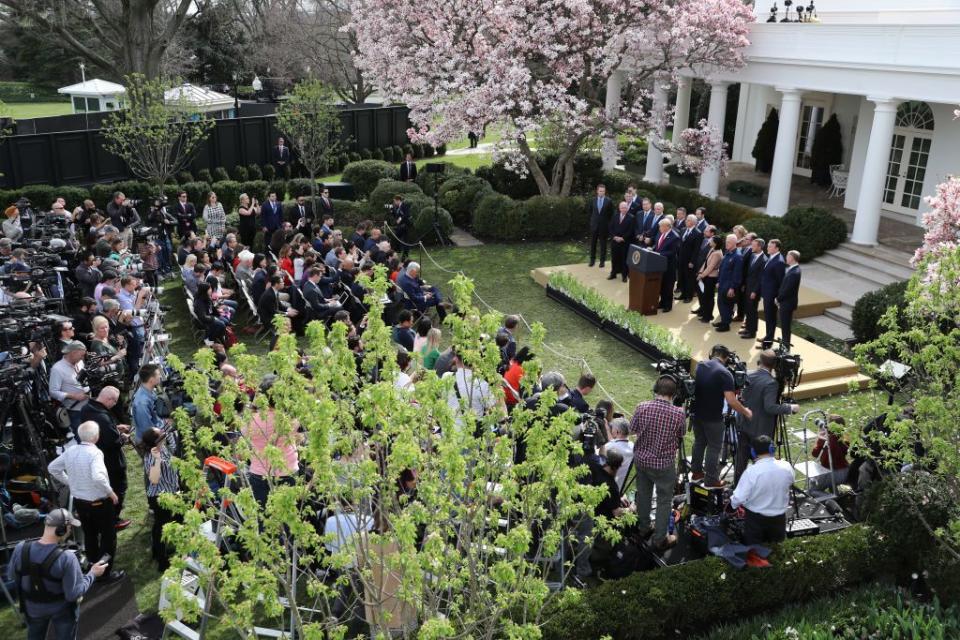The White House Reveals Changes to the Rose Garden

The White House Rose Garden is far more than a picturesque background for announcements and briefings, State Dinners, and official ceremonies. It is a place that has signified an intimate and more casual side of the White House: John F. Kennedy welcomed the Project Mercury astronauts in the Rose Garden; Richard Nixon’s daughter Tricia was married on its lawn; and Lin-Manuel Miranda and Barack Obama did a “Rose Garden Freestyle” rap. It is one of the most recognizable gardens in the United States.

Despite its name, the area more closely resembles a flowered lawn than a traditional rose garden—its half acre can hold up to 1,000 guests—a scheme that was originally created by the Kennedys in 1962. But like any aspect of the White House, changes are made during each administration. Long before the Kennedys’ design—and long after—the Rose Garden has adapted to meet the demands of the day.
And now it's received an update. First Lady Melania Trump announced last month that a privately funded effort would bring some changes, including the addition of a three-foot-wide limestone walking path.
The area also received some new infrastructure, including audiovisual and technical improvements, new drainage, and making the garden more accessible for people with disabilities.
Here's how the space has evolved over the years:
The Rose Garden in 1913
Ever since George Washington moved in to the White House’s Washington, D.C. location, there was a garden associated with the property. For over a century, various administrations shaped the grounds with greenhouses, horse stables, and trees, as well as kitchen and flower gardens. (It should be noted that during certain early administrations, enslaved people worked on and helped to shape the White House grounds. More on that here.)
In 1902, Edith Roosevelt designated the West Garden as a colonial garden and established formal flower beds. She worked with the Olmsted Brothers, landscape architects (the same firm that designed New York’s Central Park), to establish the area in front of the newly created Oval Office.
Roosevelt’s design lasted until Ellen Wilson, President Woodrow Wilson’s wife, designated the area as the Rose Garden. (Roses have always been an unofficial symbol of the White House; when it was rebuilt in the 18th century, Scottish stonemasons even carved roses into the building's columns.) The name stuck and the Rose Garden quickly became a beloved institution and place where the president could step outside for fresh air during the work day.
The Rose Garden in 1962
Returning from a tour in Europe in 1961, John F. Kennedy requested that Jackie create a formal garden reception space for the White House like the ones he had seen in Europe. Jackie, who was close with famed decorator Bunny Mellon, called her friend immediately. Mellon had helped Jackie re-decorate the family's Hyannis Port compound and consulted on much of the early White House décor decisions. The Kennedys were both aware of the marketing potential of a space like the Rose Garden, but it was up to Mellon to actualize the vision.

However, Mellon was not a trained landscape designer and was privately very nervous about undertaking such a project. She wrote, “I questioned my ability to design a garden of such importance… I had never had any formal schooling in landscape design, which would have helped now.”
She brought on Perry Wheeler, the favored landscape architect of D.C.’s elite to help her conceive of an idea. Struck by a magnolia tree that stands just outside the Oval Office, planted by Andrew Jackson in memory of his late wife, Bunny proposed three other magnolia trees to define the four corners of an open space.
Then on either side of the large lawn, a 12-foot frame, like a photo, would be filled with crab-apple trees, roses, boxwoods, and perennials that could be interchanged in different seasons. Apparently John F. Kennedy was so thrilled, he approved the plans in two days. The next step was to hire a gardener and Mellon met Irvin Williams, almost by chance. He was working in one of the National Park Service gardens in one of D.C.’s poorer neighborhoods, but she felt that he understood her vision and brought him on board; he was the White House’s chief gardener for the next 50 years.

The resulting Rose Garden was a rousing success, and though minor changes have been made over the years—Nancy Reagan brought Mellon back to the White House to consult on changes to the space—the template the Kennedys set has largely stayed in place.
The Rose Garden in 2020

On July 27, First Lady Melania Trump announced that she would refresh the space to modernize its electrical and watering infrastructure as well as make the area more accessible for those with disabilities. The renovations have been in the works since last year, and were to be paid for by private donations though officials declined to reveal the cost.
On Saturday August 22, the work, which took three weeks to complete, was revealed to reporters. Noticeable differences include replacing the Rose Garden’s signature crab apple trees with white rose shrubs, installing two new limestone paths within the garden, and planting new white “J.F.K” roses and pink “peace” roses. The paths were designed to restore part of the original Kennedy vision.
The images of the new garden show flowers in pastel shades, which the First Lady is said to favor. A criss-cross pattern of boxwoods was also added. About a dozen crabapple trees were removed and will reportedly be replanted elsewhere on the White House grounds.
On Tuesday, the First Lady will address the Republican National convention from the Rose garden. Federal rules prohibit the White House from being the setting for expressly political events, a regulation that many presidents have flirted with violating, but the Trump administration appears to have pushed further than its predecessors. The Trump family will be the first to use the executive mansion for a political convention.
You Might Also Like


